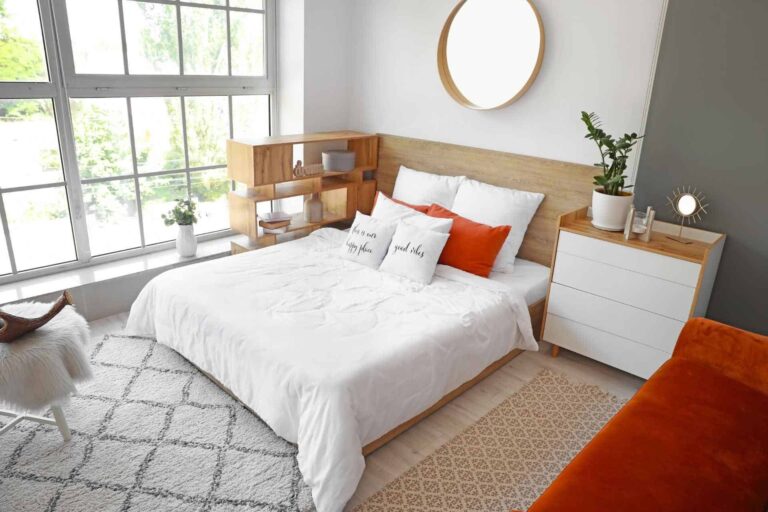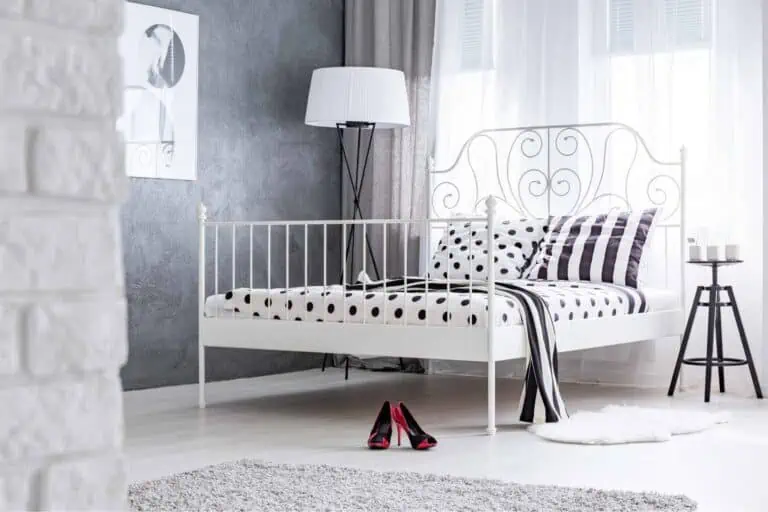How Feng Shui Bedroom Colors Affect Your Mood and Energy
Feng Shui, a traditional Chinese practice, has been gaining global recognition for its ability to create harmony and balance in living spaces. A key element of this practice revolves around Feng Shui bedroom colors, which are believed to significantly affect an individual’s mood and energy levels. These colors, chosen with intentionality and understanding, work to enhance the flow of positive energy, or Qi, in the bedroom. This can result in improved sleep, increased relaxation, and a stronger connection with one’s personal space. As we delve into this fascinating subject, we’ll uncover the meanings behind various Feng Shui colors and explore how they can be harnessed to create a tranquil, energizing bedroom atmosphere.
Understanding the Energy (Qi) in Feng Shui
At the heart of Feng Shui lies the concept of Qi, often translated as ‘energy’ or ‘life force.’ It is an elemental principle that is believed to inhabit and influence every aspect of our lives and environment. In Feng Shui, the goal is to harmonize this Qi in our living spaces to retain balance and promote prosperity and well-being. When it comes to bedrooms, the Qi can be manipulated and directed through the careful use of colors, creating an atmosphere that nurtures tranquility and positivity. The following sections will delve deeper into the essence of Qi and its relationship with color in Feng Shui practice.
Explanation of Qi concept
The term Qi (pronounced “chi”) is intrinsic to the philosophical and cultural fabric of China. In its broadest sense, Qi is the vital energy that pervades every living thing and constitutes the world around us. It’s the force that flows through rivers, blossoms flowers, allows humans to move, think, and feel. It symbolizes the underlying essence of all life and physical phenomena.
In the context of Feng Shui, Qi takes on a more specific meaning. Here, it refers to the energy flowing within our homes and personal spaces. This energy is not static but constantly dynamic, influenced by the layout, design elements, and notably, the colors used in a space. The quality, flow, and balance of Qi within a space directly affect the occupants’ well-being, mood, and fortune.
A Feng Shui practitioner considers Qi’s flow in their design recommendations. They aim to create a harmonious balance, ensuring the Qi flow is neither too fast (overstimulating) nor too slow (creating stagnation), but just right. A bedroom with a balanced Qi flow is considered peaceful, restful, and nurturing.
The Influence of Bedroom Colors on Qi

The color spectrum chosen for a bedroom can greatly influence the flow and quality of Qi in this space. Each color resonates with a different energy frequency, either amplifying, calming, or balancing the Qi. Light, tranquil hues, such as pale blues and soft greens, can foster a serene ambiance, promoting a slow, peaceful flow of Qi that encourages rest and relaxation. These colors resonate with the Wood and Water elements in Feng Shui, cultivating growth, tranquility, and rejuvenation.
Contrastingly, warm, vibrant colors like reds or oranges invoke the Fire element, generating an energetic and stimulating Qi flow. However, their use should be moderated in bedrooms, as they can overly invigorate the Qi, disrupting sleep and relaxation.
Neutral tones, like white, beige, or earthy browns, offer a balance. They resonate with the Metal and Earth elements, grounding the Qi and creating a stable, harmonious environment. The careful integration of these colors can help achieve the desired balance of Qi – not too fast, not too slow – to ensure a bedroom that is both restorative and invigorating.
Feng Shui Bedroom Colors and Their Meanings

Feng Shui bedroom colors are far from being a simple aesthetic choice. They are deeply connected to the ancient art of Feng Shui and carry significant meanings and influence on the energy, or Qi, within this intimate space. Each color is linked to one of the five Feng Shui elements – Wood, Fire, Earth, Metal, and Water – and can either amplify, calm, or balance the Qi. The careful selection and application of these colors can thus lead to a bedroom environment that is in harmony, promoting restful sleep, tranquility, and positive energy flow. In the following section, we delve deeper into the specific meanings and influences of various Feng Shui bedroom colors.
Definitions and Significance of Feng Shui Colors
Each color in Feng Shui is tied to a specific element, radiating its unique energy, and carrying its distinct significance.
- Blue (Water Element): Associated with calmness, healing, and relaxation. It represents the fluidity of water, nurturing life and growth. It’s an excellent choice for bedrooms, encouraging restful sleep and tranquility.
- Green (Wood Element): Symbolizes growth, vitality, and prosperity. Just like a tree, it stands for health and steady growth. It’s a reassuring color that brings freshness and calm.
- Red (Fire Element): A powerful color, symbolizing passion, courage, and romance. Associated with the fire element, it’s energetic and stimulating, but should be used sparingly to prevent overpowering energy.
- Yellow/Brown (Earth Element): These colors represent stability, nourishment, and quiet strength. They help to create a welcoming, nurturing environment.
- White/Metallic (Metal Element): Reflect purity, clarity, and precision. These colors can help to cultivate a sense of calm, cleanliness, and simplicity.
Understanding these associations can help one to select the most suitable color options for their bedroom, creating a space that is harmoniously balanced and energetically aligned with their personal needs and preferences. Remember, the goal of applying Feng Shui color principles is to achieve balance and create an environment where Qi can flow freely, supporting health, happiness, and wellbeing.
Choosing Your Feng Shui Bedroom Colors


When selecting the colors for your bedroom, it’s important to keep the following in mind:
- Take into consideration the natural light that enters your room. Natural light can change how a color looks on the walls dramatically.
- Consider all of the elements present in your bedroom – furniture, bedding, art, and other decorations will also contribute to the overall look/feel of the room.
- Think about the mood you want to create in your space – soothing, stimulating, calming etc.
- Consider how a color may affect any other bedrooms that are connected with yours – a deep blue can look calming in one bedroom but might be too oppressive for an adjoining room.
- Keep your personal preferences in mind when selecting colors for your bedroom. If you don’t like a certain color, it’s likely that the energy in the room won’t be harmonious.
By using these Feng Shui principles and taking into account your personal preferences, you can create a bedroom environment that promotes harmony and balance. When done correctly, Feng Shui can help to bring about feelings of relaxation, contentment, and peace of mind. It can also help to energize you and boost your productivity. Whichever feelings you want to create in your bedroom, Feng Shui colors can help you do it!
Tips on Balancing Colors for Optimal Feng Shui Energy
Balancing colors in your bedroom for optimal Feng Shui energy requires a thoughtful approach. Here are some tips to help you achieve this:
- Use a Balanced Mix of Colors: Try not to dominate your room with a single color. Instead, create a balance with a mix of colors representing the five Feng Shui elements – wood, fire, earth, metal, and water.
- Soothing Colors for a Peaceful Atmosphere: Opt for soothing colors like soft greens, light blues, or pastel shades. These can create a serene and tranquil environment, promoting better sleep.
- Energizing Colors for a Stimulating Ambiance: If you want a more adventurous or creative feel, introduce bold colors like reds, oranges, or vibrant yellows. These colors can stimulate energy and passion.
- Color Balance for Connected Rooms: Avoid stark color differences between connected rooms. A smooth transition between spaces can help the Qi flow freely.
- Test Before Deciding: Before making a final decision, test the colors in different lighting conditions to ensure they create the desired effect.
Remember, color balance doesn’t mean equal parts of every color. Instead, it’s about creating a harmonious blend that resonates with your personal energy and promotes the flow of positive Qi.
Accessorizing with Feng Shui Colors

Your bedroom isn’t just walls and furniture; accessorizing is an important part of creating a balanced space. Here are some tips on how to use Feng Shui colors in your accessories:
- Soft Furnishings: For bedding, curtains, carpets, rugs, and other soft furnishings, use colors that will create a peaceful environment. Choose pastel colors like beige, light blue, or mint green.
- Artwork: Use artwork to add bold or energizing colors like red, yellow, and orange. This can help stimulate creativity or passion in the room.
- Furniture: For furniture pieces such as dressers, nightstands, and desks, choose wood tones such as mahogany or teak. These can bring stability to the space.
- Home Decor: For home decorations like lamps, vases, and other accessories, opt for eye-catching colors like purple, pink, or turquoise. These can add vibrancy to any room.
When considering accessories to add to your bedroom, always keep in mind the Feng Shui colors you’ve chosen for the space. Make sure to choose decor and furniture pieces that are in line with your color scheme. This will help create a cohesive look and ensure the Qi flow is uninterrupted.
Final Thoughts
Choosing the right colors for your bedroom can be a daunting task. But with a little knowledge of Feng Shui principles and the right color palette, you can create an environment that promotes balance and encourages positive energy.
When selecting colors, take into consideration the four main elements associated with each hue: Fire, Earth, Water, and Metal. Also pay attention to how the colors look next to each other and the overall effect it will have on your space. With a little practice, you can create a Feng Shui bedroom that looks beautiful and encourages harmony!
Feng Shui is not just about using colors—it’s also about how you arrange furniture, lighting, and other elements to maximize energy flow in your home. Follow these tips for a balanced space and enjoy the peace of mind that comes with creating a harmonious home environment.








